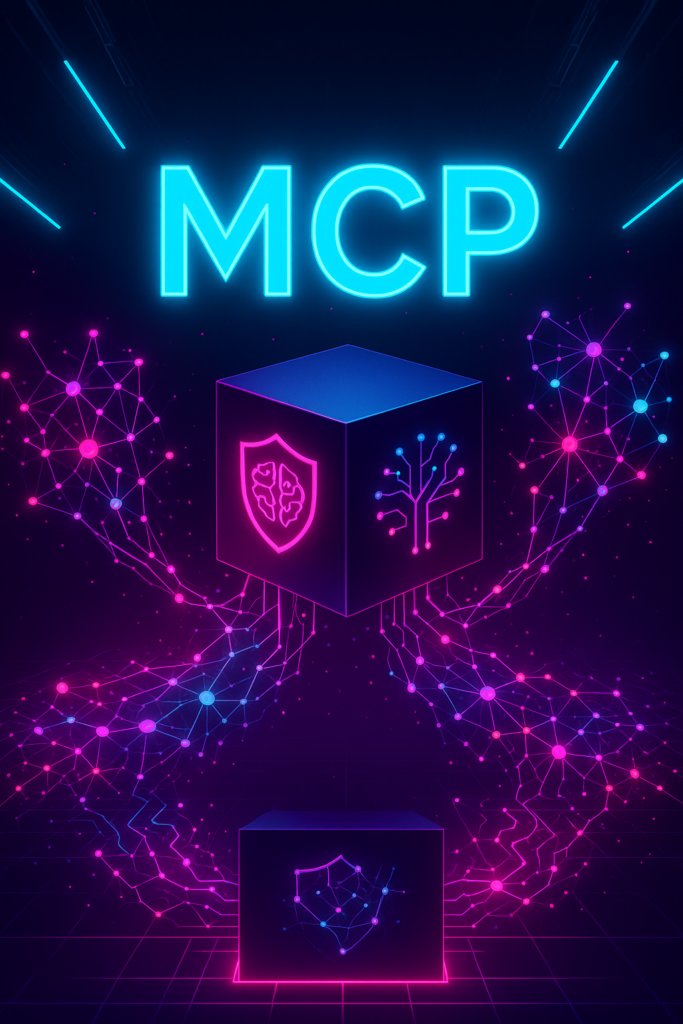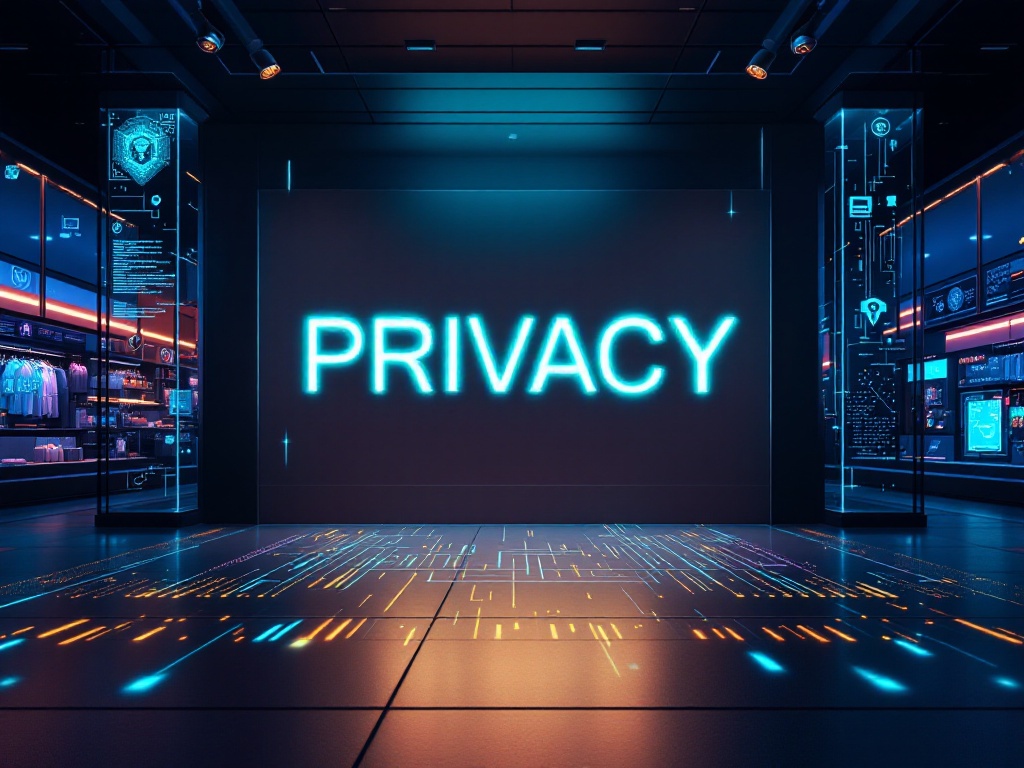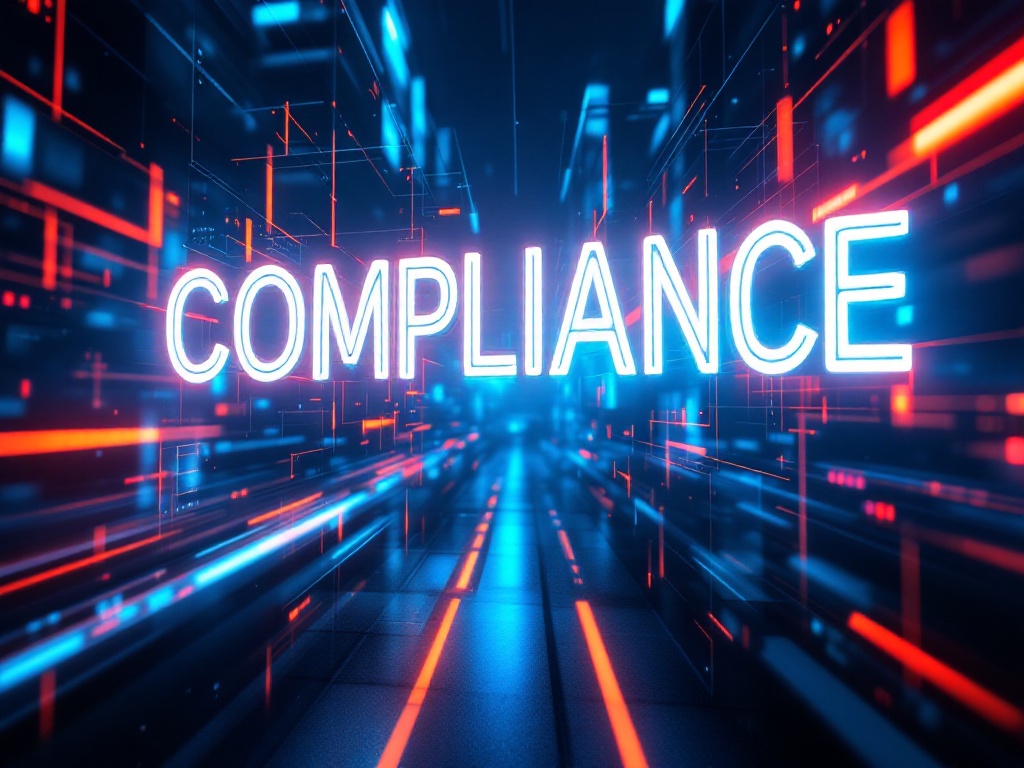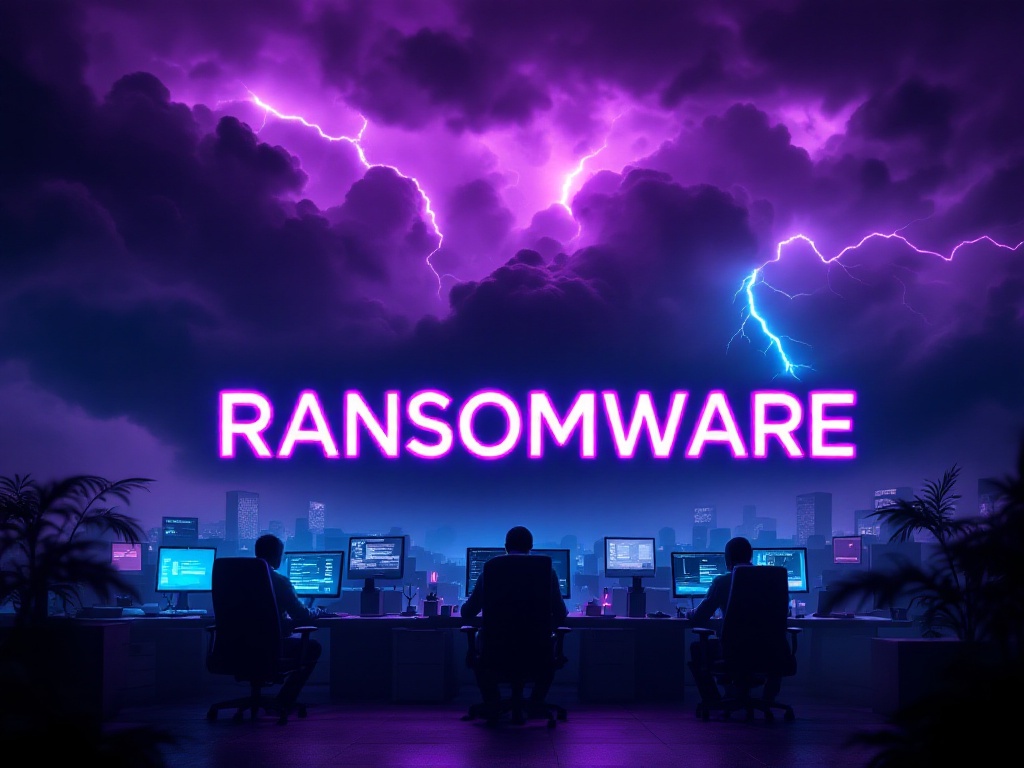Unlocking the Power of MCP: What It Is, How It Works, and How to Keep It Secure

Model Context Protocol, or MCP, is steadily transforming the way AI interacts with the digital world, but understanding what it is and how to secure it is crucial for both newcomers and tech enthusiasts alike. At its essence, MCP serves as a bridge that connects powerful AI agents with the tools, data, and services they need to actually do something useful, beyond just generating text. Before MCP came onto the scene, integrating AI with tools like databases, cloud services, or even a local spreadsheet was a tangled mess of custom APIs, complex code, and endless maintenance. MCP streamlines this chaos, creating a universal standard that allows AI agents to seamlessly request and receive information or execute actions without having to grapple with unique integration codes for each tool. Think of it as handing your AI assistant a universal remote control that can operate every digital device in your office, home, or even across the globe, all without needing to memorize a dozen different remotes. The architecture of MCP is elegantly simple but profoundly powerful. At the heart of this system are MCP clients, which reside inside AI applications—whether it’s a chatbot, a virtual assistant, or a development environment. These clients act as the messengers that pass requests from the AI to the MCP servers. MCP servers, in turn, function as interpreters or adapters. They take the AI’s structured requests, translate them into commands that the connected tools and systems understand, and relay the results back to the AI. The communication between clients and servers follows a standardized protocol that keeps interactions clean, predictable, and scalable. This protocol ensures that an AI system doesn’t need to understand every unique aspect of a tool it connects to; it simply follows the rules set out by MCP to get the job done. The potential for MCP is immense. Imagine AI agents not just answering your queries but handling complex, multi-step tasks like pulling sales data from a CRM, summarizing documents, or even transcribing a YouTube video—without needing developers to build custom integrations for each one. This is the promise of MCP, but with this promise comes significant responsibility. The same power that makes MCP a revolutionary tool for AI also makes it a tempting target for cyber threats. Unsecured MCP setups can act as open gateways for malicious actors, unintentional misconfigurations, or simply negligent practices, leading to data breaches, unauthorized system access, and vulnerabilities in the AI models themselves. This is why understanding how to secure MCP deployments is not just a technical requirement but a business imperative. Securing MCP environments requires a multi-layered approach. The foundation of this security lies in adopting a zero trust mindset. This means not assuming any tool, connection, or data source is trustworthy by default. Every component, from the AI agent to the MCP server, must be authenticated and authorized, with permissions granted strictly on a need-to-know basis. This approach ensures that even if one part of the system is compromised, the potential damage is contained. Implementing rigorous access controls, regular validation of connected tools, and strong authentication measures like multi-factor authentication are essential steps in this process. This is not just about locking doors; it’s about creating a security culture where every action and connection is verified. Another critical layer involves proactive testing and validation of the entire system through practices like Red Teaming. Red Teaming involves ethical hackers simulating attacks to uncover potential vulnerabilities before malicious actors do. This helps identify weak points in AI behavior, tool configurations, and integration pathways. Coupled with well-defined guardrails that limit what AI agents are allowed to do, this approach minimizes the chances of unauthorized or harmful actions. For instance, without these guardrails, an AI model might inadvertently execute a destructive command due to a prompt injection attack, where malicious instructions are hidden in seemingly benign inputs. MCP servers themselves are high-value targets that demand robust defenses. They should be fortified with strong authentication mechanisms, encryption of data in transit and at rest, and continuous runtime monitoring to detect anomalies. Network segmentation and isolation of MCP servers from other critical systems further reduce the risk of lateral movement by attackers. Importantly, the selection and use of MCP servers must be approached with caution. Only verified, trusted servers should be integrated into the system, with supply chain security measures such as cryptographic signing, dependency scanning, and version control applied to prevent the introduction of malicious or compromised components. Monitoring plays a pivotal role in securing MCP environments. Real-time visibility into every interaction, from the AI agent’s request to the tool’s response, enables swift detection and response to suspicious behavior. Olezka Global’s AI SOC Monitoring solution exemplifies this approach by integrating seamlessly with existing SIEM and XDR platforms, offering comprehensive oversight, forensic capabilities, and automated responses to threats. This continuous monitoring ensures that security teams can act quickly and effectively, reducing dwell time for potential threats and maintaining system integrity. Isolation strategies are equally important. High-risk tools or operations should be executed within sandboxed environments where any fallout from a breach or malfunction is contained. This approach minimizes the impact of any single compromised component, preserving the broader system’s security posture. Similarly, prompt injection attacks—where hidden commands are smuggled into content processed by the AI—must be countered with input validation and sanitization processes that strip out potentially malicious elements before they can be acted upon. Olezka Global stands at the forefront of this evolving security landscape. With partnerships spanning the AI and cybersecurity industries, the company is uniquely positioned to help organizations navigate the complex challenge of securing MCP deployments. From developing and testing robust security frameworks to providing Red Teaming services, Olezka Global’s expertise ensures that MCP and the AI models it empowers are not only operationally effective but also secure and resilient. The company’s AI SOC Monitoring extends this protection by delivering comprehensive, real-time monitoring of MCP activities, bridging the gap between traditional cybersecurity and the emerging world of AI-driven systems. The future of MCP is bright, offering
A Scalable, Secure Solution for Remote Work: Why SSE is Essential

Hybrid workforces and remote users are reshaping how organizations approach productivity and cybersecurity. Gone are the days when simple VPN connections back to the office were enough to secure remote access. VPNs, while once effective, are increasingly viewed as clunky and unreliable, with users forgetting to enable them or choosing to bypass them altogether. This has created gaps in network security that businesses cannot afford to ignore. Secure Service Edge (SSE) has emerged as a comprehensive and modern solution to these challenges, combining multiple security functions into a single cloud-delivered platform. SSE integrates essential components such as zero trust network access (ZTNA), secure web gateways (SWG), cloud access security brokers (CASB), cloud firewalls, DNS-layer security, data loss prevention (DLP), and remote browser isolation. By providing a unified security layer between users and the applications they access, SSE solutions enable centralized control over access policies, threat protection, and compliance enforcement. This approach eliminates the need for users to manage a complex list of VPN profiles for each office, datacenter, or cloud application. Instead, network traffic is automatically routed through the nearest secure cloud node, ensuring both protection and optimized performance. The benefits for businesses adopting SSE are substantial. It allows secure and seamless access for remote workers, whether they are at home, on the move, or in public spaces like cafes and airports. Unlike traditional VPN solutions that rely on user participation, SSE automates traffic protection, providing a consistently high level of security. Beyond secure network access, SSE solutions inspect internet traffic in real-time, block malicious content, sandbox unknown files, enforce compliance rules, and isolate risky browsing sessions. This ensures that users’ internet connections are secure without sacrificing performance or requiring cumbersome on-premise firewalls. SSE also addresses the growing risks of insider threats and accidental data leaks. Well-meaning employees might unknowingly connect to unsafe networks or download compromised files. With continuous monitoring, behavior analysis, and data loss prevention, SSE identifies and blocks suspicious activities before they escalate. For example, with the rise of AI-driven tools and code-sharing platforms, the risk of introducing malware into corporate codebases has grown. SSE solutions can scan and filter traffic to ensure that only clean and safe content enters the environment, reducing the likelihood of backdoors or vulnerabilities. What sets SSE apart is its adaptability and scalability. It caters to businesses of all sizes, from startups to global enterprises, enabling them to extend robust security to every endpoint without requiring significant infrastructure investments. Organizations can scale protection as they grow, adapt to changing compliance requirements, support increasing user counts, and navigate the complexities of hybrid work environments. SSE offers granular access controls for applications, comprehensive visibility into cloud applications and shadow IT, and the ability to enforce precise policies that balance security with user convenience. The integration of firewall as a service (FWaaS) and CASB functionality provides deeper insight and control over network traffic, helping detect and mitigate threats at both application and network layers. SSE also supports protection against misuse of generative AI tools, which are becoming increasingly common in workplace environments. For instance, an employee might unknowingly retrieve code from a compromised AI tool containing hidden vulnerabilities. SSE’s multi-layered scanning and control mechanisms catch these threats early, preventing potential harm to corporate infrastructure. Instead of juggling separate security solutions for different threat vectors, SSE unifies them under a single umbrella. This simplifies deployment, reduces management overhead, and allows IT teams to focus on strategic initiatives instead of reacting to daily security alerts. A cloud-managed console enables security teams to monitor the entire environment, detect anomalies, respond to incidents, and optimize security policies with efficiency and confidence. The move from traditional VPNs and fragmented security tools to SSE is more than just a technology shift. It represents a strategic evolution in how organizations protect their hybrid workforces and critical assets. It embodies zero trust principles, where access is never assumed and every connection is continuously verified. This proactive approach significantly reduces the risk of data breaches, regulatory non-compliance, and operational disruptions. At Olezka Global, we recognize that safeguarding your organization in a hybrid world demands more than piecemeal solutions. SSE offers a comprehensive, scalable, and efficient framework that ensures your users, data, and applications remain secure, no matter where they operate. Whether you are supporting remote employees, addressing compliance challenges, or seeking to enhance your overall security posture, SSE provides a clear and effective path forward. If you are ready to explore how SSE can strengthen your network, improve user experience, and protect your business from modern threats, reach out to us at Olezka Global. We are here to help you implement a security strategy that is resilient, adaptable, and tailored to your unique needs. Together, we can create a safer digital future for your workforce and customers.
Cybersecurity Showdown: MSSP vs. SOC – What’s Best for Your Business?

Cybersecurity is no longer an optional add-on—it’s an essential part of doing business in a world where digital threats lurk around every corner. Did you know that in 2024, nearly a quarter of businesses fell victim to cyberattacks? And the forecast for 2025 doesn’t look any brighter, with attackers using AI and more advanced tactics to infiltrate networks. So, what’s the best way to protect your business from these threats? That’s where the big question comes in: should you hire your own in-house Security Operations Center (SOC) team, or partner with a Managed Security Service Provider (MSSP)? Let’s break this down in a way that makes sense—whether you’re a tech guru or just trying to keep your business safe from cyber villains. What’s an MSSP Anyway? An MSSP, or Managed Security Service Provider, is like having a squad of cyber superheroes at your beck and call. These providers offer continuous monitoring, threat detection, incident response, compliance support, and more—without you needing to hire a big, expensive in-house team. Think of an MSSP as an extension of your company’s IT force, bringing specialized expertise and resources that might be tough to build on your own. MSSPs offer services like: MSSPs provide round-the-clock monitoring and threat detection to protect businesses from cyberattacks. They respond quickly to contain breaches, perform proactive vulnerability scanning and management, and offer compliance support for regulations like HIPAA, PCI DSS, SOC 2, and ISO 27001. In addition, MSSPs deliver expert security consulting to help organizations strengthen their defenses and align with best practices.But What’s a SOC? A Security Operations Center (SOC) is an internal team dedicated to keeping your business secure. These pros monitor your network, analyze security events, respond to incidents, and make sure your cybersecurity policies are rock solid. In-house SOCs give you complete control and customization, but they come with hefty costs—both in terms of money and time. SOC analysts are your front-line defenders, working shifts to ensure 24/7 coverage. They manage risk assessments, monitor for threats, handle compliance audits, and develop your organization’s security strategies. Sounds great, right? But building a SOC is no small feat. Let’s Talk Costs Here’s where things get interesting. Building an in-house SOC can cost anywhere from $1 million to $7 million a year, depending on your company’s size and complexity. This includes: Building an in-house SOC requires significant investment, starting with salaries for skilled security professionals such as analysts, engineers, and managers. Additional costs include infrastructure expenses for secure spaces, advanced hardware, and sophisticated monitoring tools, as well as ongoing training and certifications to keep the team up-to-date with evolving threats. In contrast, MSSPs offer flexible pricing models that scale with your needs. You might pay between $10 to $250 per device per month, or $150 to $300 per user. Continuous monitoring and incident response services typically cost between $2,000 and $5,000 per month, while Compliance-as-a-Service support, including audit preparation, ranges from $10,000 to $110,000 depending on the organization’s size and complexity. For many small to medium-sized businesses, partnering with an MSSP provides enterprise-grade protection at a fraction of the cost of an in-house SOC. Plus, you get access to a team of experts without worrying about hiring, training, or turnover. When Should You Consider an MSSP: Partnering with an MSSP makes sense if you’re a small or mid-sized business without the budget to build an in-house SOC. It’s also a smart choice if you operate in a highly regulated industry like healthcare, finance, or government, where compliance expertise is essential. If your business requires 24/7 security coverage but can’t justify the expense of maintaining a full-time, round-the-clock team, an MSSP can provide that support. Additionally, MSSPs offer scalable solutions that can grow with your business, ensuring your security posture keeps pace as your company expands. When Might an In-House SOC Make Sense? Building an in-house SOC might be the right choice if you’re a large enterprise with the budget and resources to establish a full-scale security operation. It’s particularly beneficial if you handle sensitive intellectual property or have unique security requirements that demand tailored oversight. Additionally, companies operating in sectors with strict data privacy laws, such as healthcare or finance, may find an in-house SOC necessary to maintain granular control over compliance and ensure full alignment with industry-specific regulations. Why Not Both? MSSP + In-House SOC = Winning Combo Here’s the real secret: it doesn’t have to be an either/or decision. Many organizations combine the strengths of an MSSP with an internal SOC to get the best of both worlds. MSSPs provide continuous monitoring, threat intelligence, and incident response, while your in-house team focuses on strategic security planning, compliance, and internal risk assessments. Pairing an MSSP with compliance automation tools can supercharge your security posture. MSSPs handle the operational heavy lifting, while automation platforms help with control implementation, reporting, and keeping your organization audit-ready. This approach lets you scale security as your business grows, without burning out your internal team. The Bottom Line Whether you build an in-house SOC, partner with an MSSP, or combine the two, the key is to make an informed decision based on your needs, budget, and long-term goals. MSSPs are a cost-effective way to access world-class security expertise without the overhead. In-house SOCs offer control and customization for businesses with deep pockets and unique security needs. Combining them gives you flexibility, scalability, and a proactive defense against today’s evolving cyber threats. At Olezka Global, we’re here to help you navigate the world of cybersecurity. Whether you need a full-service MSSP, advice on building a SOC, or a hybrid approach, we’ve got your back.
Essential Privacy Tools and Practices for Online Safety

Privacy is no longer just a concern for tech-savvy users or high-risk individuals. It is a critical aspect of everyday life. The rapid evolution of technology, combined with the growing scope of surveillance by governments, corporations, and hackers alike, means that your personal data is constantly being tracked, stored, and analyzed. Whether it’s for targeted advertising, cybersecurity measures, or even counter-terrorism, the data you generate through your online activities is being scrutinized in ways you may not fully comprehend. At Olezka Global, we believe that everyone deserves the tools and knowledge to protect their privacy, whether at home or while traveling. From ad networks and hackers to government agencies, it seems everyone is vying for access to your data. Consider this: you’re sitting in an airport lounge, enjoying your favorite music, only to see ads for that very band moments later. Or perhaps you’re checking your bank balance to budget for a purchase, unaware of who else might be monitoring your financial activities. The reality is, we live in an era of constant digital observation. Let’s explore key privacy challenges and practical tools you can use to protect yourself in this interconnected world. Private Browsing and VPNs Private browsing modes and VPNs (Virtual Private Networks) are excellent first steps toward enhancing online privacy. VPNs like Mullvad, known for its strict no-logs policy, encrypt internet traffic and mask your IP address, making it harder for third parties to track your activities. However, it’s important to remember that using VPNs, particularly those based offshore, can place you under different legal frameworks, potentially exposing you to additional risks. Another option to consider is Mysterium VPN, a decentralized VPN solution that distributes connections across multiple nodes rather than relying on a single centralized server. This approach enhances privacy by making it more difficult for your activity to be traced back to one location. Privacy-Focused Browsers Traditional browsers often track and log user activity extensively. Alternatives such as Mullvad Browser, developed in collaboration with Tor, and Vivaldi, headquartered in Norway, offer robust privacy protections. Mullvad Browser stops tracking cookies, blocks browser fingerprinting, and works seamlessly with any VPN, offering a highly secure browsing experience. Vivaldi anonymizes browsing data, does not collect personal information, and hosts its data in Iceland under strong privacy laws. Search Engines with Strong Privacy Policies Your search queries provide insights into your interests, concerns, and even vulnerabilities. Consider switching to privacy-focused search engines like Qwant from France, Mojeek from the UK, Startpage from the Netherlands, and Ecosia based in Germany. Qwant and Mojeek operate independent indexes and avoid user tracking, while Startpage acts as a privacy intermediary between you and major search engines, ensuring your personal data is removed before results are returned. Ecosia uses its revenue to plant trees and offers a user-friendly alternative that avoids excessive data collection. Encrypted Email Providers Email remains a major vector for data collection and cyberattacks. Providers like ProtonMail from Switzerland and Tuta (formerly Tutanota) from Germany offer end-to-end encryption and ensure the privacy of your communications. ProtonMail provides encrypted email, cloud storage, and a VPN, while Tuta extends encryption to emails, subject lines, calendars, and contacts. Both services offer the ability to send password-protected emails to non-users. Keep in mind that no provider is immune to regulatory pressures, so staying informed is key. Using Tor and Tails for Enhanced Anonymity For users seeking maximum online anonymity, Tor (The Onion Router) offers a solution by routing your traffic through multiple encrypted nodes. While effective, Tor can be slower due to the multiple layers of encryption and network relays. For even stronger privacy, Tails (The Amnesic Incognito Live System) is an operating system designed to run from a USB stick, leaving no trace on the host machine. Tails combines the power of Tor with a secure, portable environment, ideal for private browsing and communications when traveling or using untrusted computers. The Global Privacy Challenge Relying on offshore services might offer stronger privacy protections in some cases, but it also introduces new complexities. Legal frameworks vary by country, and some jurisdictions may have agreements that allow for data sharing with other nations. Privacy is never absolute. It’s about evaluating who you trust with your data – the local agencies or the offshore providers who may be beyond your legal reach. Be Proactive, Not Just Reactive Adopting proactive privacy measures is crucial. VPNs, privacy-focused browsers, encrypted email services, and secure search engines don’t make you invisible, but they significantly reduce your exposure to tracking and unauthorized data access. Whether you’re working from home, on the move, or accessing public networks, these tools create protective layers that make you a harder target. Educate Yourself and Assess Your Risks Privacy protection is about making informed decisions. Are you willing to let companies use your data for targeted ads? How much convenience are you willing to trade for greater privacy? Whether it’s switching to a privacy-first browser or using encrypted email, understanding the trade-offs and evaluating your comfort level with different tools is essential. In summary, privacy is not a one-time fix. It’s an ongoing process of adopting tools, staying informed, and managing risks effectively. At Olezka Global, we encourage you to take control of your digital footprint, using privacy tools that align with your needs. Whether at home or abroad, proactive privacy measures are essential for maintaining control over your personal data.
Simplifying Regulatory Compliance for Modern Businesses

Today’s rapidly evolving regulatory landscape, businesses face an ever-growing maze of compliance requirements. Regulations are not just burdensome legal obligations; they are vital safeguards designed to protect businesses, consumers, and data from escalating risks. The challenge is that compliance requirements are expanding, changing, and becoming more complex across industries. This makes it harder than ever for businesses to keep pace, especially those without large compliance teams. This is where Compliance-as-a-Service (CaaS) steps in as a game-changing solution. Offered by Olezka Global, CaaS provides businesses with a dedicated team of compliance experts who handle the heavy lifting of maintaining compliance with regulatory standards. Rather than hiring full-time compliance officers, companies can tap into a team that specializes in compliance advisory services, risk assessments, policy creation, and ongoing monitoring to ensure compliance boxes are checked and maintained. The recent rise in new regulations by both private organizations and governments reflects an intensified effort to protect businesses and consumers alike. Whether it’s data privacy laws like GDPR, financial compliance standards like SOX, sector-specific frameworks like HIPAA in healthcare or PCI-DSS in retail, or privacy and security regulations like GLBA in financial services, these regulations act as critical defenses against cyber threats and fraud. However, staying compliant isn’t automatic. It requires proactive measures, continuous updates, and expert oversight. Unfortunately, many businesses, especially educational institutions and smaller enterprises, face tight budgets that make building an in-house compliance team challenging. Compliance-as-a-Service offers a cost-effective alternative by providing scalable, on-demand access to a team of compliance professionals. This approach ensures that businesses can keep up with evolving regulations without the financial strain of maintaining a full-time staff. CaaS providers like Olezka Global bring specialized expertise across multiple frameworks, including ISO 27001, NIST, SOC 2, GLBA, and more. They support organizations by helping them align policies and procedures with best practices, manage documentation, perform risk assessments, and prepare for audits. This comprehensive approach significantly reduces the risk of non-compliance penalties, reputational damage, and operational disruptions. Another benefit of CaaS is the ability to stay ahead of changes in the regulatory environment. As new regulations emerge and existing standards evolve, CaaS providers keep clients updated and prepared, ensuring that policies and procedures are adjusted accordingly. This agility minimizes the risk of compliance gaps and ensures organizations can maintain trust with stakeholders. CaaS also includes services like continuous compliance monitoring, which proactively identifies potential issues before they escalate into violations. Automated reporting and clear documentation further simplify the audit process, ensuring that businesses can confidently demonstrate compliance during assessments. In essence, Compliance-as-a-Service transforms a typically reactive and resource-intensive function into a proactive, streamlined, and expert-led process. It enables businesses to shift their focus from worrying about regulatory compliance to driving growth and innovation. For businesses facing mounting compliance obligations and resource constraints, investing in Compliance-as-a-Service is a strategic move. It’s not just about meeting legal requirements; it’s about demonstrating a commitment to security, protecting stakeholders, and avoiding the headlines for the wrong reasons. If your organization is struggling to keep pace with regulatory changes or simply wants to enhance its compliance posture without the cost and complexity of an in-house team, Olezka Global’s Compliance-as-a-Service is the solution. Let us help you stay compliant, mitigate risk, and focus on what matters most, growing your business with confidence.
Why Cloud Adoption Alone Won’t Secure Your School’s Data

As schools embrace the digital age, many are moving away from traditional on-premise servers and transitioning to cloud-based systems. This shift is driven by the promise of flexible data access, streamlined costs, and reduced management overhead. Yet, as the recent PowerSchool data breach reveals, the move to the cloud is no silver bullet when it comes to cybersecurity. The adoption of cloud services in education is being fueled by a desire for efficiency and agility. With cloud-based school information systems, educators and administrators can access critical data, including grades, attendance records, and student profiles, from anywhere with an internet connection. This hybrid model supports learning and administrative functions across multiple locations while reducing the risk of lateral movement within a school’s internal network in the event of a breach. On paper, this appears to strengthen cybersecurity. However, the reality is more complex. Cloud services are only as secure as the practices of the providers offering them. When educational institutions entrust vast amounts of sensitive data, including students’ Social Security numbers, medical records, and grades, to cloud or SaaS providers, they are relying on those vendors to uphold the highest security standards. The PowerSchool incident is a cautionary example. Hackers accessed the internal customer support portal using stolen credentials, extracting sensitive student and teacher data. Despite assurances from PowerSchool that the stolen data has been deleted, the breach exposed systemic vulnerabilities that cannot be ignored. This situation highlights a crucial point: moving to the cloud does not inherently reduce risk. While cloud platforms offer scalability and the potential for reduced costs, they also introduce new risk vectors. Without robust security policies and compliance frameworks in place, these platforms can become prime targets for cybercriminals. Educational institutions must thoroughly evaluate their providers’ commitment to compliance with standards such as NIST (National Institute of Standards and Technology) and SOC 2. These frameworks provide essential guidelines for securing data, ensuring privacy, and maintaining control over digital assets. Unfortunately, many educational institutions face the dual challenge of limited funding and rising expectations for data security. Budgets for IT and cybersecurity in schools are often stretched thin, making it difficult to implement comprehensive security measures or hire dedicated cybersecurity personnel. Compliance requirements, however, are becoming increasingly mandated, particularly in regions enforcing stricter data privacy laws. When institutions handle sensitive data belonging to students, teachers, and parents, ignoring security best practices can lead to severe consequences. Educational leaders need to understand that compliance is not just a box to check; it is a crucial part of operating in a digital world. Without proactive investment in data security, including proper vetting of SaaS providers, rigorous access controls, and clear incident response planning, schools risk not only financial penalties but also the loss of trust from students, parents, and the broader community. The PowerSchool breach also highlights the importance of secure credential management and strong internal controls. The attackers gained access using stolen credentials, a reminder that even robust systems are vulnerable to human error or oversight. Schools and their cloud providers must implement multi-factor authentication, enforce strict password policies, and continuously monitor for suspicious activity to reduce these risks. In conclusion, while cloud adoption offers significant operational benefits for educational institutions, it is not a cybersecurity panacea. Schools must approach cloud migration with a comprehensive strategy, focusing on detailed risk assessments, careful vetting of vendors, continuous monitoring, and a commitment to compliance and best practices. Recent breaches serve as a wake-up call that cloud security must be taken seriously and incorporated into every school’s digital strategy. If your school or district is considering moving to the cloud, remember that security is a shared responsibility. Choose providers with proven compliance credentials, invest in robust training and clear policies, and establish a comprehensive incident response plan. The cloud can be a powerful tool, but only when paired with proactive and informed cybersecurity practices.
Virtual Heists and Deepfake Deception

Remember when robbing a bank meant drilling into vaults or dodging security cameras? Those days are long gone. Today’s digital con artists don’t need masks or guns—they just need your face and a bit of data from your social media. Welcome to the high-stakes world where deepfakes, AI-powered impersonation, and real-time social engineering are rewriting the rules of cybercrime. It all begins with reconnaissance. Cybercriminals aren’t just guessing passwords or blasting out generic phishing emails anymore. They’re diving deep into social media profiles, piecing together professional and personal details like a jigsaw puzzle. Your LinkedIn endorsements, TikTok videos, casual tweets—they’re all raw material. Once they’ve gathered enough, these criminals craft hyper-realistic deepfake videos or AI-generated voice clips to impersonate you or your company’s VIPs. Imagine this: a virtual board meeting where an attacker appears as your CEO, complete with convincing gestures, familiar speech patterns, and even that quirky head tilt everyone knows. They use this digital puppet to authorize fund transfers, approve sensitive projects, or leak confidential data. It’s not a movie plot, it’s happening now. According to recent threat intelligence, there was a jaw-dropping 442% increase in voice phishing (vishing) attacks last year, fueled by AI-generated phishing and impersonation. Meanwhile, social engineering remains a dominant breach vector, with phishing and pretexting driving a significant portion of incidents. It gets even wilder. Some North Korean threat groups have been using deepfakes to impersonate candidates in remote job interviews, aiming to infiltrate organizations by landing remote roles. Imagine hiring someone who doesn’t exist, only to have them quietly exfiltrate sensitive data from inside your company. This isn’t just about stealing money from personal bank accounts anymore. It’s about using AI and deepfake tools to virtually rob businesses blind, infiltrate networks, and compromise sensitive collaborations. And here’s the kicker: most defenses are built around detection, trying to guess if the person you’re talking to is real or not. But as deepfakes improve, relying on probability-based detection is a losing game. Why? Because AI makes deception cheap and scalable. With a few minutes of reference material, open-source tools can now create shockingly convincing fakes. And virtual collaboration tools like Zoom, Teams, and Slack often assume the person on the other side of the screen is who they claim to be. That’s the gap cybercriminals exploit. So, how do we fight back? Traditional endpoint tools and user training can only go so far. Spotting subtle signs like unnatural blinking or distorted shadows is getting harder. The answer lies in prevention, not just detection. That means shifting from guesswork to provable trust. Enter technologies like Netarx’s deepfake detection tools. Netarx takes a radically different approach. It gives every meeting participant a visible, verified identity badge, backed by cryptographic device authentication and continuous risk checks. Instead of relying on passwords or codes, it confirms identities in real time and ensures that only compliant, secure devices can join meetings. It’s like having a digital bouncer at the door of your most sensitive virtual spaces. If someone’s device is infected or their identity can’t be cryptographically proven, they’re simply not getting in. This proactive strategy removes the burden of judgment from end users. You don’t need to play digital detective during a high-stakes call. Everyone can see, at a glance, that the person speaking is real and authorized. This isn’t just a patch, it’s a shift in how we approach trust in the digital age. The bottom line? In the world of AI-driven deception, seeing is no longer believing. The digital face you see on a call could be a meticulously crafted fake. But with the right combination of cautious online behavior, cutting-edge verification tools, and a prevention-first mindset, we can lock the virtual doors before the criminals even get a chance to knock. So next time you hop on that Zoom call or check your email, remember: cyber heists don’t need ski masks anymore, they just need your face, a little data, and a lot of AI. Stay vigilant, stay verified, and let technology work as your first line of defense.
DragonForce: Exploitation of SimpleHelp

Here’s a story that reads like the next cybercrime thriller but is all too real. DragonForce, a notorious cybercriminal group, recently took over RansomHub, a ransomware operation known for aggressive extortion. But what’s even more fascinating and alarming is how they’re weaponizing vulnerabilities in SimpleHelp, a remote monitoring and management (RMM) tool used by countless IT teams. Let’s dive into how DragonForce pulled this off, what made it possible, and what companies need to do to keep these digital wolves at bay. So, what’s the deal with SimpleHelp? It’s a cross-platform RMM solution that lets IT pros manage and troubleshoot remote systems. But like any powerful tool, it’s only as strong as its defenses. DragonForce found some chinks in the armor, and they weren’t shy about exploiting them. It all started with weak input sanitization in certain versions of SimpleHelp. Essentially, the software wasn’t doing a great job of filtering out harmful data when handling things like authentication and file uploads. DragonForce’s hackers crafted sneaky requests to the SimpleHelp server that let them upload malicious files, often disguised as harmless scripts or installers. By exploiting path traversal vulnerabilities (think of them as taking a shortcut through a digital back door), they could place malware outside of restricted areas, bypassing security checks. Once they slipped through, it was game over for a lot of systems. SimpleHelp often runs with high-level privileges, so once DragonForce had access, they could move laterally across connected systems. They used this access to drop ransomware payloads—their own brand from the newly acquired RansomHub toolkit onto multiple endpoints. And before you ask, yes, they also used SimpleHelp’s built-in features to steal data, quietly moving files out of networks before locking systems up and demanding payment. But that’s not all. DragonForce wasn’t content to just break in and cause chaos. They set up encrypted reverse shells and tunneling scripts basically secret communication channels that blend in with normal network traffic. This allowed them to control compromised machines remotely, issue commands, and evade detection. They even used domain generation algorithms (DGAs) to keep their command servers a moving target, making it nearly impossible for defenders to block them effectively. The pièce de résistance was integrating these attacks with RansomHub’s advanced ransomware features. These included double extortion tactics, where the attackers not only encrypted files but also threatened to leak stolen data if ransoms weren’t paid. They used payloads that could sense if they were running in a virtual environment (a common security testing trick) and delay execution to avoid getting caught. And they didn’t stop at encryption, they also deployed tools to scrape passwords and tokens from memory, expanding their reach. Now, this all sounds pretty scary, but there are concrete steps companies can take to defend themselves against attacks like this. First off, always keep your software patched, vendors like SimpleHelp often release updates to fix known issues, but it’s on you to apply them. Use the principle of least privilege: don’t let RMM tools have admin rights unless absolutely necessary. Implement strong access controls and continuous authentication checks to make sure the right people—and only the right people, are logging in. It’s also critical to protect against brute-force attacks and rate-limit login attempts to slow down automated hacking scripts. Using web application firewalls (WAFs) can help detect and block suspicious activity, including those nasty path traversal tricks. And don’t forget to change default credentials, turn off unnecessary features, and make sure all traffic is encrypted with strong TLS protocols. On top of that, companies should invest in continuous monitoring tools like SIEM or XDR to catch unusual behavior early, things like odd data transfers or weird commands being issued from the RMM. And if you’re serious about security, have an incident response plan ready to go, so you can isolate compromised systems and call in the cavalry (vendors, law enforcement, whoever you need) before the damage spreads. The moral of the story? DragonForce’s hijacking of SimpleHelp shows how cybercriminals are evolving, turning trusted IT tools into weapons of mass disruption. But by understanding their tactics and tightening up defenses, companies can make sure they’re not the next headline in the ransomware hall of shame.
BlackSuit Ransomware: Modern Cyber Extortion

There’s a new villain in town, and they don’t just slip quietly into your network, encrypt your files, and leave. Meet BlackSuit, a ruthless ransomware operation that has taken the art of digital extortion to new heights. Their method isn’t just about grabbing your data; it’s about psychological pressure, relentless communication, and a chillingly public spectacle. Let’s take a deep dive into how BlackSuit operates, and more importantly, what companies can do to defend themselves against this evolving threat. BlackSuit isn’t your average ransomware crew. They’ve perfected a playbook that blends technical expertise with old-school mobster tactics, and it’s scarily effective. It starts with a breach, often through phishing emails, exploiting vulnerabilities in unpatched software, or targeting exposed remote access systems. Once inside, BlackSuit operators conduct meticulous reconnaissance, identifying the most valuable files and systems. They don’t rush. They quietly map out your network, escalate privileges, and locate backups that can be disabled or deleted to maximize their leverage. Then comes the encryption. Critical data is locked down using strong encryption algorithms, and a ransom note is left behind. But BlackSuit doesn’t stop there. They’ve mastered the art of double extortion. Not only do they encrypt your files, but they also exfiltrate gigabytes of sensitive data. If you don’t pay, they threaten to release this data to the public. And here’s where they turn up the heat. BlackSuit sets up a public leak site, showcasing a sample of the stolen data just enough to prove they’re serious. They even invite victims to visit the site, as if to say, look what we’ve got. Then the phone calls start. Yes, BlackSuit will pick up the phone and call your company directly. Their negotiators, often fluent in legal and business language, will try to push for a settlement. They’ll offer to reduce the ransom amount if you comply quickly, or they’ll raise the stakes with the threat of a full data dump. This isn’t just cybercrime; it’s a full-blown shakedown. BlackSuit’s operators are highly professional. They know how to exploit human psychology, using fear and public humiliation as tools. They understand that a company’s reputation is often more valuable than any encrypted files. By leaking just enough data to get your attention, they ensure you know exactly what’s at stake. Their level of detail is astonishing. They’ll often tailor their ransom demands based on your company’s size, revenue, and even recent news about your business. They know your pain points, and they’re not afraid to press them. In this age of sophisticated ransomware like BlackSuit, it’s no longer enough to rely on firewalls and endpoint protection alone. Security controls are essential, but they’re just one part of a comprehensive strategy. What sets resilient organizations apart is their ability to respond effectively when, not if, an attack occurs. Every company needs a well-documented incident response plan that outlines exactly what to do in the event of a ransomware attack. This includes immediate containment measures, communication protocols both internal and external, legal considerations, and steps to engage with threat actors through professional negotiators if needed. Regular, offline, and immutable backups are your safety net. Backups should be tested frequently, stored securely offsite, and protected with robust access controls. Without good backups, recovery is nearly impossible. A Security Operations Center service that monitors your network 24/7 is vital. An effective SOC can detect suspicious activity, block lateral movement, and provide early warnings before ransomware can deploy its payload. If BlackSuit or any other ransomware crew strikes, you need experienced cyber crisis negotiators who understand how to communicate with threat actors. These professionals can help manage negotiations, reduce ransom amounts, and buy time for mitigation efforts. A good security policy goes beyond technical controls. It includes regular employee training on phishing and social engineering, strict access management, multi-factor authentication, and regular security audits. It also covers guidelines for managing third-party vendors and cloud services, which are often exploited in supply chain attacks. Defense in depth means layered security controls from endpoint detection and response to network segmentation, privileged access management, and continuous vulnerability assessments. It’s not cheap, but it’s a must-have in today’s threat landscape. Don’t just wait for alerts. Proactive threat hunting can uncover hidden compromises and close security gaps before an attacker can exploit them. While BlackSuit may sound like a fresh face in the ransomware scene, its roots trace back to older, well-known ransomware operations. Many researchers believe that BlackSuit is an evolution of previous groups like Royal or even Conti, rebranding with sharper tactics and more aggressive extortion methods. Their operational playbook shows a level of maturity that suggests experienced cybercriminals are at the helm. The era of build a wall and hope for the best is over. BlackSuit and groups like them are proof that determined attackers will find a way in. The question is whether your organization is prepared to withstand the hit, recover, and prevent future breaches. Resilience comes from preparation. It’s about having the right tools, the right people, and a solid plan. Yes, it requires investment, but compared to the cost of a successful ransomware attack, lost data, reputational damage, legal fees, and ransom payments, it’s a price worth paying. So, the next time you hear about ransomware on the news, remember, it’s not just about encryption anymore. It’s about complete digital hostage-taking, complete with phone calls, public shaming, and data dumps. But with the right strategy, you can ensure your organization stays standing, no matter how sophisticated the threat.
Secure your future with an MSSP today

Yo, digital warriors! Cybersecurity today isn’t just some nerdy buzzword, it’s your first line of defense against real, dangerous threats like ransomware, phishing scams, and devastating data breaches. The digital battlefield is evolving every day, and the bad guys aren’t just sending annoying spam emails anymore. They’re using advanced tactics to infiltrate networks, steal data, and extort businesses for millions. If you’re not already serious about protecting your data, it’s time to wake up and get with the program. This blog dives deep into why partnering with a Managed Security Service Provider (MSSP) is more than just a smart move, it’s essential for survival in today’s high-stakes digital landscape. MSSPs are like your personal cyber defense squad, working around the clock to keep your digital world safe. Picture this: a team of elite security pros constantly monitoring your systems, hunting for threats, and shutting down suspicious activity before it becomes a crisis. They handle everything from threat detection and compliance management to incident response and forensics, so you don’t have to build a huge in-house team from scratch. MSSPs are equipped with the latest tools and techniques, always staying ahead of the curve while hackers are still plotting their next move. One of the biggest advantages of partnering with an MSSP is access to cutting-edge services like Security Operations Center (SOC) support and Extended Detection and Response (XDR). A SOC is essentially the nerve center of your cybersecurity defenses, staffed with skilled analysts who work 24/7, combing through logs, analyzing alerts, and responding to potential incidents in real time. They’re not just reacting to alarms, they’re proactively hunting for vulnerabilities and suspicious behavior that could indicate an attack is brewing. XDR takes this protection to the next level by offering advanced, all-in-one threat detection across your entire digital footprint. It pulls together data from endpoints, networks, servers, cloud environments, and more, creating a comprehensive view of what’s happening in your ecosystem. By connecting the dots between different data points, XDR enables MSSPs to identify complex attack patterns and stop threats faster and more accurately than ever before. This isn’t just monitoring, it’s precision defense. To really lock things down, MSSPs focus on what I like to call the Triad of Protection: Cloud Management, Firewall Management, and Endpoint Management. Let’s break it down. Cloud Management is about securing the vast amounts of data and applications you store in the cloud. MSSPs enforce strong access controls, encrypt data, and continuously monitor cloud environments for suspicious activity. Whether your data is being stored, processed, or transferred, MSSPs keep it safe from intruders. Next is Firewall Management, the digital equivalent of a fortress wall around your network. Firewalls control the flow of traffic, allowing trusted data in and keeping malware and unauthorized access out. MSSPs don’t just set and forget your firewall, they actively monitor traffic patterns, adjust rules, and respond swiftly to any red flags. This proactive approach ensures that even if hackers try to sneak in, they’re stopped at the gate. Finally, there’s Endpoint Management. In today’s work-from-anywhere world, every laptop, tablet, and smartphone is a potential entry point for attackers. MSSPs lock down these devices by deploying antivirus solutions, enforcing patching and updates, and monitoring for signs of compromise. By securing each endpoint, MSSPs make sure every device connected to your network is as impenetrable as Fort Knox. So why choose an MSSP? It’s simple. MSSPs bring a level of expertise and specialization that most businesses simply can’t match on their own. They offer continuous monitoring and rapid response to threats, which is crucial when minutes matter. Their proactive threat hunting capabilities mean they’re not just waiting for alarms, they’re actively seeking out vulnerabilities and stopping attacks in their tracks. MSSPs also help you navigate the complex world of compliance, ensuring your company stays in line with evolving regulations and avoids costly fines. Building an in-house security team with the same level of skill, technology, and vigilance is not only difficult, it’s expensive. MSSPs give you all the benefits of a world-class security operation without the overhead, saving your company time and money. They’re the brain surgeons of the cybersecurity world, diving deep into the technical trenches to protect your digital assets, while MSPs focus more on keeping your IT systems running smoothly and efficiently. Let’s be real, no company is immune to cyber threats. Whether you’re a startup or a global enterprise, the risk is always there. The question isn’t if you’ll be targeted, but when. By partnering with an MSSP, you gain access to a comprehensive, proactive defense strategy that includes cutting-edge tools, real-time monitoring, expert threat response, and compliance support. It’s not just about reacting to incidents, it’s about preventing them before they happen. Bottom line, teaming up with an MSSP isn’t just a smart business decision, it’s a necessity in today’s world. With cyberattacks evolving faster than ever, you need a team that’s proactive, vigilant, and always ready to defend your digital assets. Don’t wait for a disaster to strike. Get yourself an MSSP, and stay one step ahead of the bad guys. Stay safe, stay secure, and keep rocking the digital world.